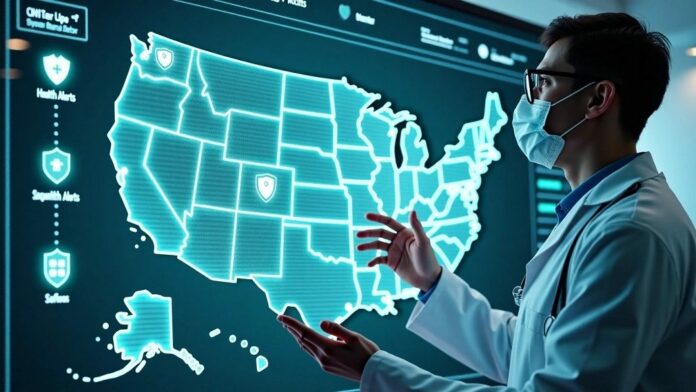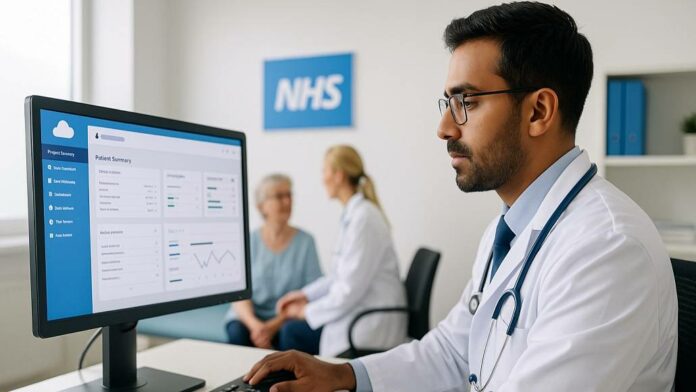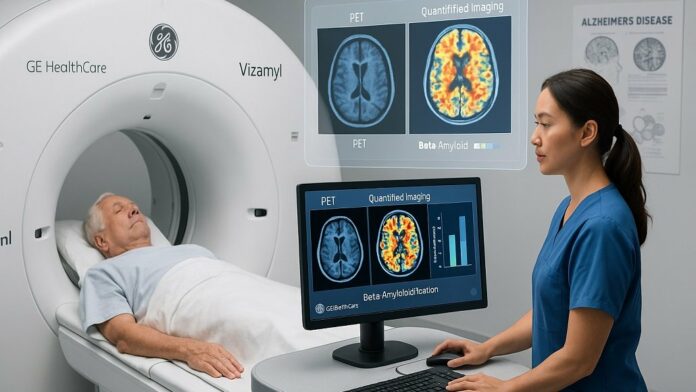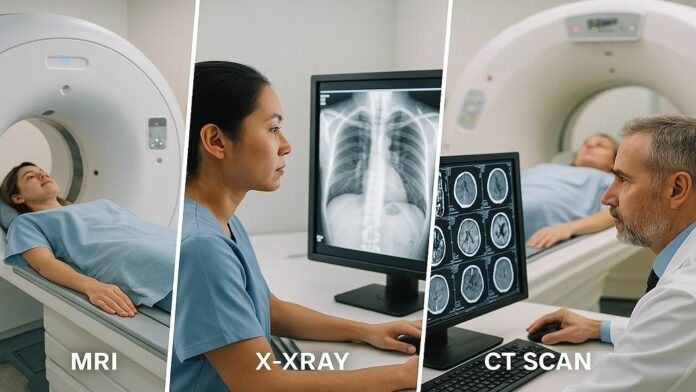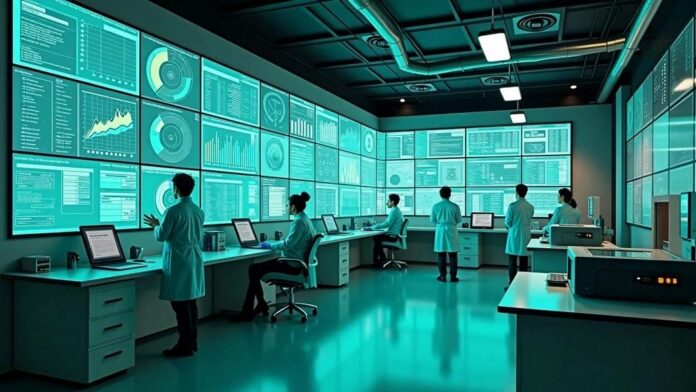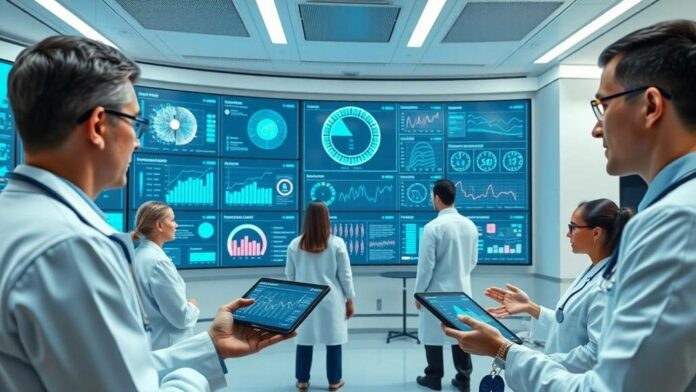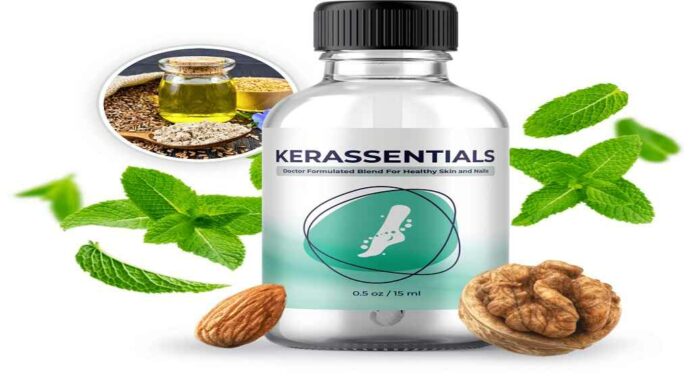My experience with nail health has seen its share of ups and downs. I tried many products before discovering Kerassentials. After fungal problems affected my nails, I decided to test Kerassentials for 60 days to get a full picture.
The product made a strong first impression. It came in professional packaging with clear instructions. The oil-based formula had a distinct natural scent that wasn’t too strong but you could notice it right after application. I found the dropper applicator helpful to target specific areas without wasting the product.
What is Kerassentials?
Kerassentials is a nail health solution that Dr. Kimberly Langdon, a well-known medical doctor and fungal infection expert, developed to treat fungal infections differently. This specialized oil doesn’t just mask the symptoms – it tackles the root cause of nail fungus.
The product comes in a small bottle with an applicator that lets you put the all-natural liquid oil right on your affected nails and skin. Unlike regular treatments full of harsh chemicals, this formula utilizes organic plant oils and extracts that are proven to fight fungus, bacteria, and inflammation.
What makes Kerassentials special is how well it gets absorbed. Most fungal infections hide under your nail plate where regular treatments can’t reach. This oil goes deep inside and even reaches your bloodstream to kill fungal spores from within. The formula works in several ways at once:
The oil kills fungal spores in your nail bed and surrounding skin. It builds a shield against new infections and soothes irritation. Your nails become stronger with essential nutrients while regaining their natural color and thickness.
Kerassentials works as a complete system to support your nails and skin instead of being just another antifungal product. It actively fights fungal infections while keeping damaged tissues fed to help them heal and prevent the infection from coming back.
The product is made in FDA and GMP certified facilities in the USA. There are no GMOs or stimulants in the formula, so you can use it regularly without worry. While it was first made to treat toenail fungus, you can use the oil on your fingernails too.
Most Kerassentials reviews show that this treatment gives you a natural option instead of prescriptions or surgery. It’s especially helpful if you have ongoing nail problems and prefer an integrated approach to health care.
✅ Click to Visit the Official Website
How Does Kerassentials Work?
Kerassentials works through four different mechanisms that fight nail fungus at its source. The product’s power comes from its layered strategy against fungal infections.
The oil goes deep into the nail bed where most topical treatments can’t reach. Active ingredients can then directly attack fungal colonies hiding under the nail plate. This targets the root cause instead of just treating surface symptoms.
Natural oils create an invisible shield on the nail surface after absorption. This shield keeps moisture from building up and stops outside pathogens from getting in. That’s why users see better long-term results compared to regular treatments.
The formula’s anti-inflammatory properties make up the third mechanism. When nail fungus causes swelling in nearby tissues, it leads to pain and redness. Kerassentials’ ingredients calm this inflammation while fighting the underlying infection.
The oil also feeds your nails essential nutrients that make them stronger. This helps rebuild damaged nails and brings back their natural color, thickness, and clarity. Stronger nails naturally resist future fungal attacks better.
Kerassentials stands out from other treatments because of its comprehensive strategy. The formula doesn’t rely on just one ingredient – it uses multiple natural compounds in a collaborative effort. Each ingredient makes the others work better. This detailed approach tackles everything about fungal infections at once – from killing spores to fixing damage and stopping reinfection.
The natural oils keep working under the surface as the treatment continues. They gradually turn infected nails into healthier, clearer ones without the harsh chemicals or side effects you’d get from prescription antifungal medications.
Kerassentials Ingredients
Kerassentials’ strength comes from its natural ingredients that were carefully selected for their antifungal and nail-strengthening properties. My testing period helped me understand how these ingredients work together to deliver results.
Lavender oil is one of the main ingredients that provides antifungal and antibacterial benefits. This versatile oil eliminates existing fungal colonies and creates an environment where future infections can’t thrive. Tea tree oil works with it to deliver potent antifungal properties that reach deep into the nail bed and target stubborn infections.
Clove bud oil makes the formula work better by a lot through its eugenol content – a powerful compound that fights many fungal strains. This ingredient also helps relieve the discomfort that often comes with infected nails.
Organic flaxseed oil is one of the formula’s most impressive components. It contains omega-3 fatty acids that make brittle nails stronger and support healthy growth. This ingredient improved my damaged nails’ texture noticeably.
The formula uses almond oil as an excellent carrier oil. It ensures the best absorption while delivering vitamins E and D directly to problem areas. This helps restore moisture without creating the dampness that fungi need to grow.
Lemongrass oil adds more benefits with its natural compounds citral and geraniol that are proven to fight fungi. Manuka oil works like other ingredients to provide powerful antimicrobial properties.
Undecylenic acid, which the FDA recognizes as an effective antifungal agent, completes the formula. It disrupts fungal growth cycles by targeting the fungi’s cell membranes to stop them from multiplying.
My 60-day trial showed this smart combination of ingredients steadily improved my condition. The best part was that I didn’t experience the harsh side effects that usually come with regular treatments.
Benefits of Kerassentials
My two-month trial of Kerassentials revealed several clear benefits for people who have nail health problems.
Kerassentials stands out with its two-way approach to treatment. Regular treatments only fight active infections, but this formula kills fungal colonies and builds nail strength at the same time. Users don’t need multiple products because it takes care of everything in nail health.
The oil’s deep-penetrating formula delivers active ingredients right where fungi hide beneath the nail plate. Surface treatments can’t reach these areas. This explains why users see longer-lasting results compared to regular over-the-counter products.
Kerassentials doesn’t just heal current infections – it creates an invisible shield that stops them from coming back. This protective barrier works better than old treatments that leave nails open to reinfection after the original problem clears up.
The natural ingredients are a huge plus. The formula doesn’t contain harsh chemicals found in prescription medications, so side effects are rare. People with sensitive skin or health conditions can use it safely long-term.
Real benefits show up within weeks in daily life. People feel more confident at work and in social situations as their nails look normal again. The shame of having visibly infected nails fades when nail color and clarity improve.
The formula helps more than just nails. It makes cuticles and surrounding skin healthier too, which improves the overall appearance of your nails.
This treatment boosts your body’s natural defenses against fungal growth instead of hiding symptoms temporarily. This difference makes Kerassentials great for anyone who wants lasting nail health improvements rather than quick fixes that don’t last.
Click Here To Access The Kerassentials Official Website
Pros
My testing period with Kerassentials revealed several outstanding benefits. The all-natural formula stands at the top of my list. Many conventional treatments use harsh chemicals, so this natural approach gives peace of mind to people who care about what goes on their bodies.
Kerassentials’ ease of use ranks high on the list of strengths. The dropper applicator helps target specific areas without mess, unlike creams or ointments. This feature proved valuable when I needed to treat just one or two affected nails while leaving healthy ones alone.
The product’s versatility makes it another winner. While it’s marketed mainly for toenail fungus, it works just as well on fingernails. You won’t need multiple products, which makes your treatment routine simpler.
No prescription requirements make this product more convenient. Many effective antifungal treatments need doctor visits and pharmacy trips, but Kerassentials is right there online. You save time and avoid any embarrassment.
The non-greasy formula quickly absorbs without leaving stains on clothes or bedding. My 60-day test showed none of the unpleasant residue that other products often leave behind.
The complete money-back guarantee deserves a mention. This 60-day return policy lets you try the product risk-free. If you don’t see results, you can get your money back.
The formula’s lack of harmful additives sets it apart. There are no GMOs, stimulants, or artificial preservatives that might cause allergic reactions or sensitivities.
The product’s best feature is how it prevents and treats at the same time. Kerassentials creates an environment that fungi hate, which helps protect against future infections. This matters because nail fungus can be incredibly persistent once it takes hold.
Cons
Kerassentials works well against nail fungus, but it comes with some limitations. I tested it for 60 days and found several drawbacks you should know about before buying.
You need patience with this product. Unlike prescription medicines that work quickly, Kerassentials takes time. I didn’t see any real changes until after three weeks of regular use. This slower timeline can frustrate people who have severe fungal infections.
The cost is something to think about too. A bottle costs around $69 and lasts a month, which is pricier than simple over-the-counter options. Bulk purchases offer discounts, but the original cost might put off budget-conscious buyers.
The recommended schedule requires four applications daily. This demands dedication. My testing showed that sticking to this schedule was tough, especially on busy workdays. Progress slowed down whenever I missed applications, which proves how important the schedule is.
There’s another catch – you can buy Kerassentials only from their official website. Local pharmacies and stores don’t stock it, so you might face delays when ordering more.
The oil-based formula works well but creates small hassles. I had to wait a few minutes after applying it before wearing socks or shoes to avoid stains. This waiting time disrupted my morning routine sometimes.
Results vary from person to person. My milder fungal spots improved faster, while stubborn areas needed the full treatment time. Other Kerassentials reviews mention similar differences in how well it works depending on infection severity.
These drawbacks don’t take away from the product’s benefits. They are practical points you should weigh against its advantages before choosing this nail treatment.
How To Use?
Using Kerassentials correctly is a vital part of getting the best results. I tested the product for 60 days and found that both consistency and proper technique make a huge difference in how well the treatment works.
You need to start by really cleaning and drying your affected nails. This prep step will give a perfect base for the formula to work since there’s no trapped moisture under or around the nail. Skipping this step will substantially reduce how well the product absorbs and works.
The daily treatment needs four applications using the dropper that comes with it. Here’s the schedule that worked best for me:
- Right after morning shower
- Middle of the day (take off your shoes quickly)
- Early evening
- Before going to bed
Put 2-3 drops right on the affected nail and skin around it. Then use the brush that comes in each bottle to spread the formula over the entire nail, under its edge, and on the surrounding cuticle. This detailed coverage helps treat all the spots where fungus might hide.
Let the formula absorb for 30-60 seconds before putting on socks or shoes. I found that wearing breathable shoes between treatments really helped improve results by cutting down on moisture buildup.
Keep up with the treatment for the full recommended time, even if you see improvements early on. The fungal infection often stays active under the nail surface after visible signs get better. Many people stop too early and the infection comes back.
After successful treatment, many users like me benefit from a reduced schedule of 1-2 applications daily for prevention. This ongoing care creates a barrier against new infections.
Keep your Kerassentials bottle in a cool, dry spot away from sunlight to keep its natural ingredients strong. The application process needs dedication, but this simple four-step daily routine takes minimal time and can lead to major improvements in nail health.
Check The Official Website To See If Kerassentials Is Currently In Stock
Any Side Effects?
I carefully tracked any safety issues during my 60-day trial of Kerassentials. The all-natural formula turned out to be gentle on my skin and nails with very few side effects.
My first few days using it, I felt a slight tingling around my nail edges that went away within minutes. Other Kerassentials reviews mention this mild reaction too – it likely happens when the active essential oils start working. After a week, my skin adjusted to the formula and the sensation disappeared completely.
The oil has a natural smell that isn’t bad but you might notice it if you have a sensitive nose. This wasn’t a big deal for me, but it’s worth mentioning if you work somewhere with strict rules about scents. The smell fades quickly once your skin absorbs the oil, so I wouldn’t really call it a side effect.
You should do a patch test before using it fully if you have known reactions to any ingredients, especially tea tree oil or lavender. This makes sense with any topical treatment, whether natural or not.
My skin showed no signs of irritation, redness, or allergic reactions during the test period. Your experience might differ based on your skin’s sensitivity and nail conditions. The formula stays gentle because it uses plant-based ingredients instead of harsh chemicals.
The oil might temporarily stain light-colored fabrics before it soaks in completely. This is more about how to use it properly than an actual side effect. You can avoid any staining by letting it absorb for the recommended time.
Beyond my own experience, the manufacturer stays upfront about possible sensitivities. They tell you to stop using it if you get unusual reactions – good advice for any health product.
The natural ingredients in Kerassentials explain why there are no serious side effects reported. This safety profile gives it a real advantage over regular treatments that often warn about liver problems or skin damage.
Kerassentials Customer Reviews and Complaints
My research on Kerassentials went beyond my own testing. I looked at what many customers had to say about their experience with this nail treatment solution.
People who bought the product often talk about how much better their nails look. Most see real changes within 3-4 weeks of regular use, which lines up with my results. Long-term users seem especially happy about how their discolored nails become lighter over time.
“After nearly giving up on my toenail issues, Kerassentials finally gave me results when nothing else worked,” writes one customer who tried many over-the-counter options without success.
In spite of that, not everyone leaves glowing reviews. The biggest problem user’s mention is the need to apply it four times daily. This hits home for me too – it’s nowhere near easy to stick to this schedule on busy days.
Some customers feel let down by slower results, especially when they have severe, years-old fungal infections. These comments usually come from people who stopped treatment before finishing the recommended course.
Price comes up a lot in reviews. While users know it costs more than simple drugstore options, some call it worth every penny for the results. Others question if the price tag makes sense.
The company’s customer service gets lots of praise. Users love how easy it is to get a refund if the product doesn’t work for them.
My personal experience matches what most customers say – Kerassentials works well if you stick with the full treatment plan. You just need patience and consistency to see the best results. Each person’s results vary based on how severe their infection is, how well they follow instructions, and what they expect to achieve.
Pricing & Money Back Guarantee
Kerassentials offers three different package options that fit various treatment needs. A single bottle costs $69 and lasts 30 days – perfect if you want to test how well it works. The three-bottle package gives you better value at $59 per bottle ($177 total) and provides a 90-day supply.
The six-bottle package is the most affordable choice at $49 per bottle ($294 total). This option works best if you have stubborn nail fungus that needs longer treatment. My testing showed that buying multiple bottles makes sense because nail healing takes time.
Shipping is free on all six-bottle packages in the United States, which makes the larger package an even better deal. You’ll pay standard shipping fees for the three-bottle and single bottle options.
Your purchase comes with a detailed 60-day money-back guarantee. This lets you try the full treatment without any risk. The refund process is simple – just contact their customer service team within 60 days of purchase with your order details.
Customer feedback shows the company handles refunds quickly. Most refund requests are processed within 48 hours. The actual credit might take 3-5 business days to show up in your account, depending on your bank.
The official Kerassentials website is the only place you should buy this nail treatment. This helps ensure you get an authentic product and keeps you eligible for refunds. Unauthorized resellers can’t provide the same quality control or refund protection.
Conclusion
I tested Kerassentials for 60 days, and my verdict is clear: this natural nail treatment works for people who stick with it. The slow changes I saw in my damaged nails definitely justify the premium price, but you need patience throughout the experience.
This formula’s most impressive feature is its integrated approach. It doesn’t just hide symptoms. Kerassentials fights fungal infections, rebuilds nail strength, and creates a protective barrier against future problems. This layered strategy ended up giving better long-term results than other treatments I tried before.
The natural ingredients deserve special mention. During my testing, I had none of the harsh side effects you often get with chemical-heavy alternatives. The careful mix of lavender oil, tea tree oil, and other natural ingredients worked gently but effectively to restore my nail health.
You need to apply it four times daily, which takes dedication. But this commitment pays off because regular use speeds up progress. My experience shows that following the recommended schedule, though demanding, leads to better results.
The price is higher than simple drugstore options, but Kerassentials gives you more value through its targeted delivery system and prevention features. The multi-bottle packages make sense since nails heal gradually and work better with extended use.
This treatment works best when you follow the exact application steps and can wait for natural results. After my 60-day experience, I recommend Kerassentials to anyone with ongoing nail problems who wants a natural solution instead of harsh chemicals.
The nationwide spread of nail fungus problems has left many people scrambling to find treatments that work. It’s frustrating to see countless products promise miracle cures but deliver nothing but disappointment. That’s why I decided to test Kerassentials, a natural nail fungus remedy that’s been getting a lot of attention lately.
This detailed Kerassentials review will share my real 60-day experience with the treatment. You’ll get my honest take on what worked and what didn’t. Most Kerassentials reviews just repeat what the manufacturer says, but my assessment comes from actual daily use and careful tracking of results.
Nail fungus is tough to treat because it lives under the nail plate where most treatments can’t reach. We tried conventional treatments that only masked the symptoms without fixing the root cause. This created an annoying cycle of temporary improvement followed by the fungus coming right back.
People fighting nail fungus usually try these options:
- Multiple over-the-counter creams that barely work
- Prescription medications with risky side effects
- Random home remedies with hit-or-miss results
Finding a safe treatment that actually works is what everyone with fungal nail infections wants. Kerassentials caught my eye because it claims to use natural ingredients with a special delivery system that gets under the nail surface.
My two-month test gives you the full picture if you’re wondering whether this treatment offers real hope or if it’s just clever marketing. I looked at everything from how to apply it to visible changes, how well it absorbs, and the long-term results. This review will help you understand if Kerassentials is worth your time and money.
Click Here to Order Kerassentials with A 60-day Money-back Guarantee from Its Official Website
FAQs
Q1. How long does it take to see results with Kerassentials?
Most users start noticing improvements within 3-4 weeks of consistent application. However, for optimal results, it’s recommended to use the product for the full 60-day period as nail healing is a gradual process.
Q2. Is Kerassentials safe to use?
Yes, Kerassentials is generally safe to use. It’s made from natural ingredients and doesn’t contain harsh chemicals. However, as with any topical treatment, it’s advisable to do a patch test first, especially if you have sensitive skin or known allergies to any of the ingredients.
Q3. How often should Kerassentials be applied?
For best results, Kerassentials should be applied four times daily – typically in the morning, midday, early evening, and before bedtime. Consistency in application is key to achieving optimal outcomes.
Q4. Can Kerassentials be used on both fingernails and toenails?
Yes, while primarily marketed for toenail fungus, Kerassentials is equally effective for treating fingernail issues and improving overall nail health.
Q5. What sets Kerassentials apart from other nail fungus treatments?
Kerassentials stands out due to its all-natural formula, deep-penetrating properties, and dual-action approach. It not only fights existing fungal infections but also strengthens nails and creates a protective barrier against future infections, offering a more comprehensive solution than many conventional treatments.


















